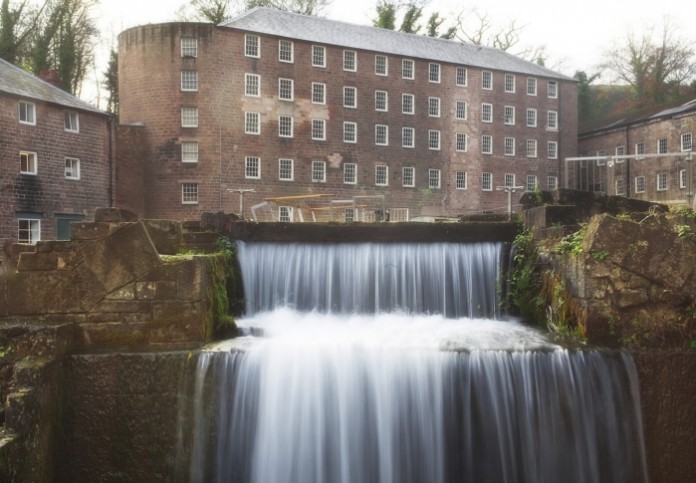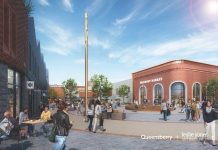Work is nearing completion on a unique new managed workspace scheme for the creative industries within the Derwent Valley Mills World Heritage site in Cromford.
The project is aimed at introducing a viable new use for one of the historic Grade I buildings at Cromford Mills, in the heart of the Derbyshire countryside.
The building, which has been empty and in disrepair for decades, is the largest mill building on the site and the refurbishment has been made possible by funds raised by the Arkwright Society, a charity devoted to restoring industrial and historic buildings in Cromford.
Cromford Creative will comprise of a cluster of individual and multiple managed workspace office units for single entrepreneurs, micro-businesses, social enterprises and SMEs within the creative sector.
The refurbished building will include 8,000 sq ft of flexible commercial space, situated on the four upper floors of a former warehouse, previously known as ‘Building 17.’ The 17 flexible workspaces range in size from a 177 sq ft (16.5 sq m) to 1,312 sq ft (122 sq m) and are available as single or multi-office lets or as a whole floor.
The accommodation boasts excellent connectivity. Tenants will also be able to take advantage of the other services and facilities available at Cromford Mills, including conferencing and meeting rooms, a café and a restaurant, which is open in the evenings.
Rents are fully inclusive of all occupational costs. The only additional charges are business rates (where applicable), telephone and broadband. On-site car parking facilities are also available.
Accommodation at Cromford Creative will be available to rent from early in the New Year.
Commenting on the development of the new Cromford Creative scheme, Sarah McLeod CEO at Cromford Mills, said:
“Building 17 is one of the most important heritage assets on the whole of the Cromford Mills site and we are delighted that it is soon to be restored to its former glory, taking us another step towards our long term aim of creating a sustainable future for the Cromford Mills.
“We’re absolutely delighted that the project is now complete and it’s just a case of filling up the rooms now – this shouldn’t be hard though as the interest in the site has already been phenomenal.
“Before we started this we said how important it was that work was carried out to the highest conservation standards – now it’s complete I can safely say we’ve stuck to our guns and achieved that.”
Russell Rigby, managing director of Rigby & Co, who are agents for the scheme, added:
“There is virtually no managed workspace provision within 10 miles of Cromford Mills, which is forcing local businesses to remain at home, or travel to other schemes further afield.
“Derbyshire is renowned as a hub for the region’s creative industries and Cromford Creative will complement the existing provision that already exists in for example, Derby city centre, with Connect Derby’s Friar Gate Studios and Sadler Bridge Studios, and also in Sheffield.
“I’ve probably been back and forth to the site about a hundred times since I started working on it and I can’t get enough of the place – the drive to it and the views out of the window and the offices spaces, everything about it is stunning.
“Cromford Creative will also meet the increasing demand from creatives who are looking for an alternative to city centre-based working and enable them to draw inspiration from a stunning location in the heart of the Derwent Valley Mills World Heritage site.”
Cromford Creative represents the first phase of a stunning £50m regeneration and restoration masterplan for Cromford Mills by the Arkwright Society, which will transform Cromford Mills into a multi-use sustainable heritage, cultural, tourism and hospitality business and enterprise destination.
As part of the project, work is also being done to the ground floor to create a new visitor gateway to the Derwent Valley Mills World Heritage Site. The Gateway Centre will highlight the international significance of the Derwent valley and signpost people to explore what there is to see and do within the globally important world heritage site.
Major funding partners for the project include ERDF, HLF and The Architectural Heritage Fund. Donations also include £500,000 from The Monument Trust to transform the building, which was on Historic England’s English Heritage’s at-risk register.


















